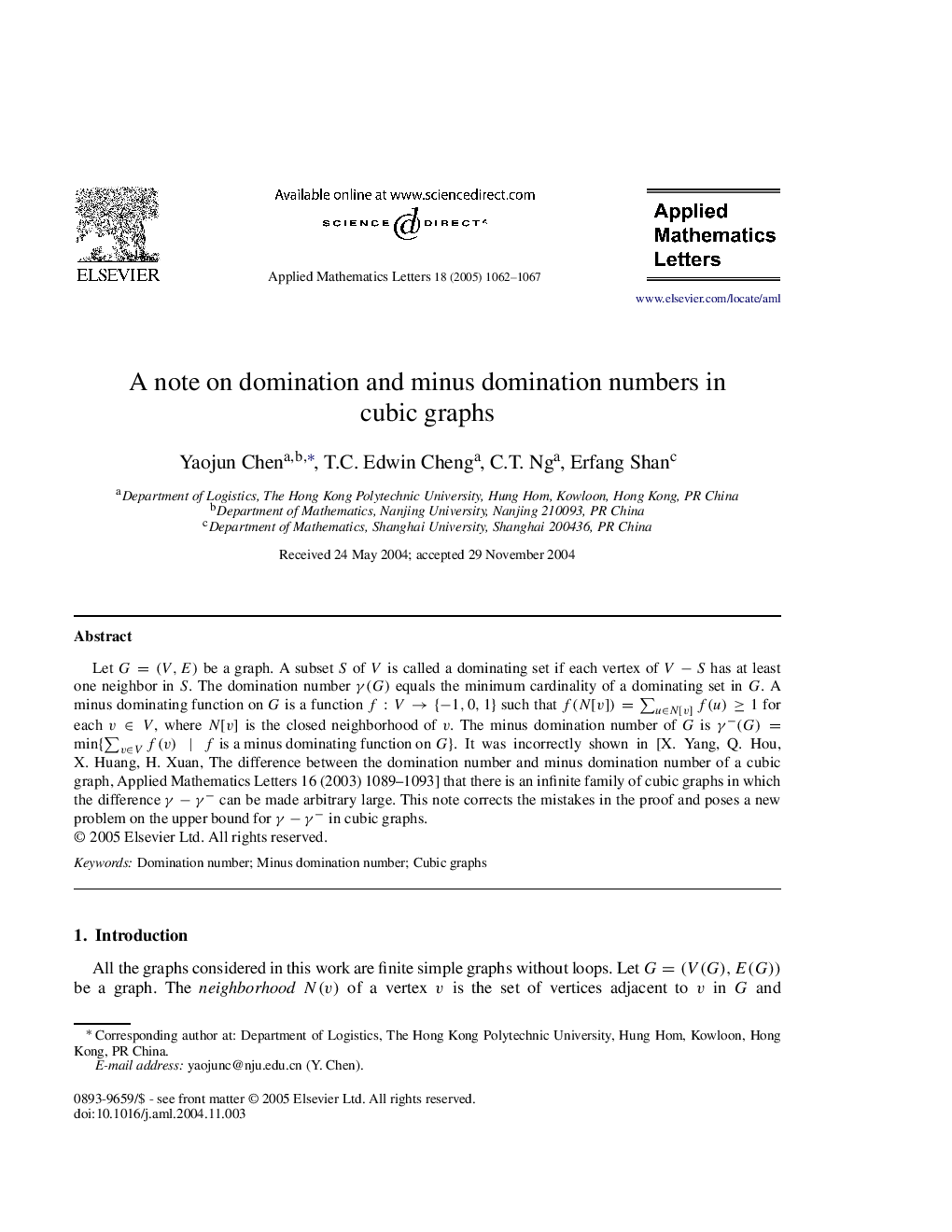| Article ID | Journal | Published Year | Pages | File Type |
|---|---|---|---|---|
| 10678597 | Applied Mathematics Letters | 2005 | 6 Pages |
Abstract
Let G=(V,E) be a graph. A subset S of V is called a dominating set if each vertex of VâS has at least one neighbor in S. The domination number γ(G) equals the minimum cardinality of a dominating set in G. A minus dominating function on G is a function f:Vâ{â1,0,1} such that f(N[v])=âuâN[v]f(u)â¥1 for each vâV, where N[v] is the closed neighborhood of v. The minus domination number of G is γâ(G)=min{âvâVf(v)â£f is a minus dominating function on G}. It was incorrectly shown in [X. Yang, Q. Hou, X. Huang, H. Xuan, The difference between the domination number and minus domination number of a cubic graph, Applied Mathematics Letters 16 (2003) 1089-1093] that there is an infinite family of cubic graphs in which the difference γâγâ can be made arbitrary large. This note corrects the mistakes in the proof and poses a new problem on the upper bound for γâγâ in cubic graphs.
Keywords
Related Topics
Physical Sciences and Engineering
Engineering
Computational Mechanics
Authors
Yaojun Chen, T.C. Edwin Cheng, C.T. Ng, Erfang Shan,
